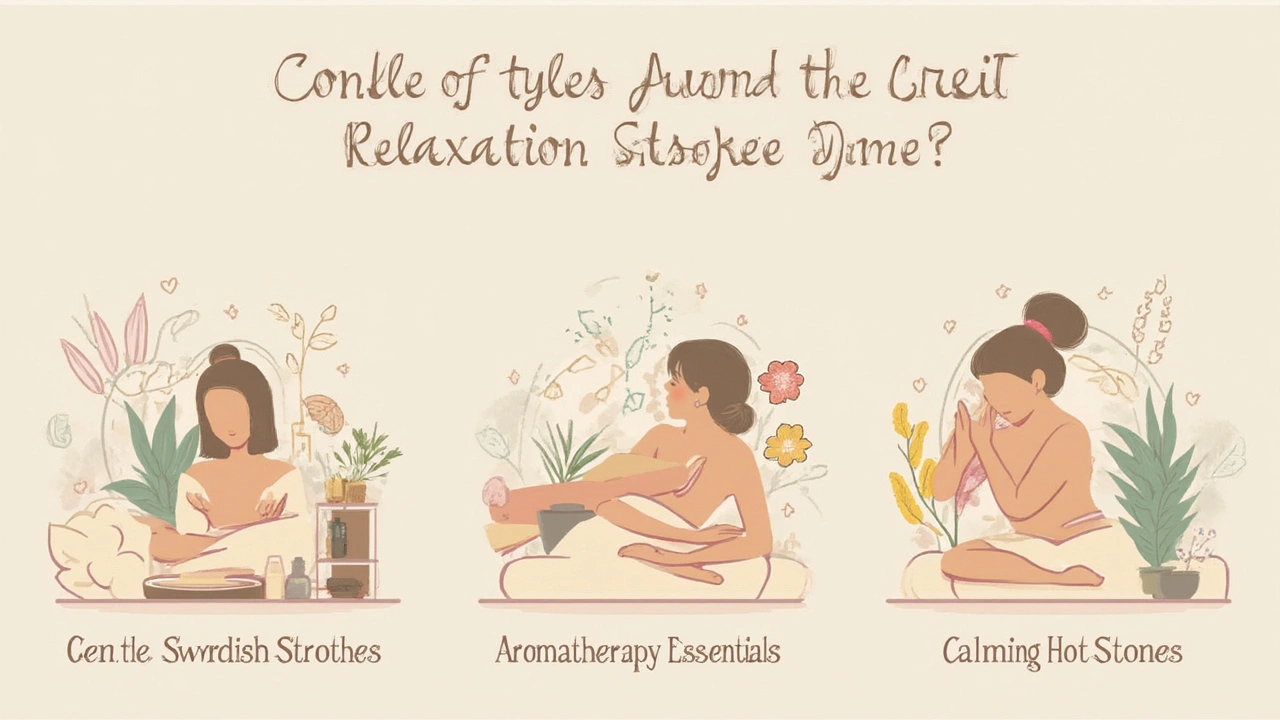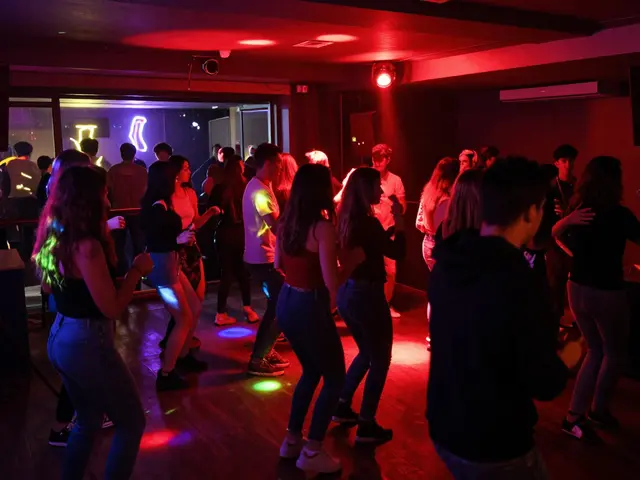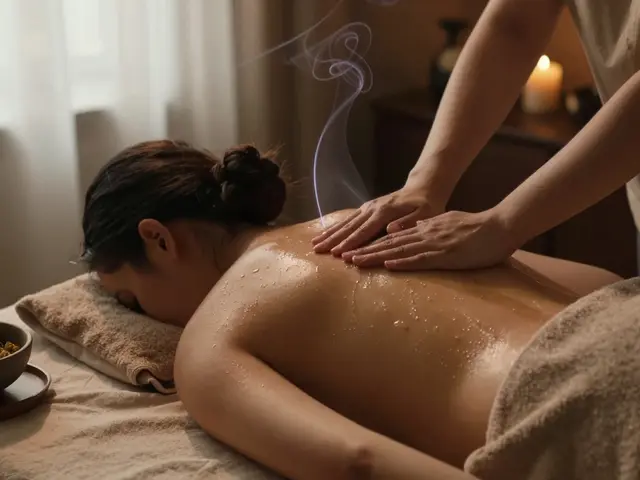Everyone talks about stress, but not enough people talk about how to actually let it go. Enter the massage relaxant—think of it as your body’s reset button after a week that just wouldn’t quit. You don’t need to be a spa regular or know fancy lingo to get the point: it’s all about deep relaxation, smoother sleep, and lighter moods without popping a single pill.
If you’ve ever left work feeling like your shoulders are glued to your ears, this is for you. With just an hour on the table, a pro can knead away the tight spots you didn’t even know you had. It’s not only about feeling good in the moment. The best part? You’ll probably walk out with clearer focus and more patience for whatever comes next.
Before you book that first session, knowing what’s out there and how the process works can save you headaches. Want to know which massage style fits your vibe or how not to overpay? You’re in the right place. Keep reading—I’ll break down everything you need without the old-school spa fluff.
- Key Takeaways
- What Is a Massage Relaxant?
- Top Benefits and When You Need One
- Types of Relaxation Massages
- How to Find the Best Massage Services Nearby
- What Happens in a Session?
Key Takeaways
If you’re after less stress and more chill, a massage relaxant delivers results fast. It’s about switching off your brain and letting tense muscles finally relax. Science backs this up—according to a 2023 wellness survey, 72% of people said they notice a solid mood boost after a single relaxation massage. Here’s what you need to know from the start:
- Massage relaxant focuses on soothing slow strokes (don’t expect deep pain or intense stretches—think pure comfort).
- Most sessions last between 50 and 90 minutes, and you don’t need to prep or bring fancy gear—just show up.
- Benefits are real: easier sleep, happier mood, reduced muscle soreness, and often lower blood pressure, all without any pills or side effects.
- You can find services everywhere—from local wellness clinics to dedicated spas—and many offer online booking for quick scheduling.
- Prices range a lot, but the average cost in most cities sits between $50 and $120 per hour (tipping is usually expected).
- If you’re nervous, no worries—therapists see all body types, and they’re there to help you feel comfortable and relaxed.
Here’s a quick look at what folks experience from a massage relaxant in the U.S., based on recent feedback:
| Benefit Noticed | % of People |
|---|---|
| Lower Stress | 81% |
| Better Sleep | 65% |
| Less Muscle Tension | 77% |
| More Positive Mood | 55% |
No need to overthink it—a relaxation massage is a simple, proven way to feel better from your head to your toes.
What Is a Massage Relaxant?
A massage relaxant is a hands-on technique that takes your stress, tension, and muscle knots and makes them melt away. The whole point is to get you to relax both physically and mentally. Therapists use slow, gentle strokes to boost circulation, calm your nervous system, and ease all the built-up tension from daily life.
So, how is this different from, say, a sports massage or deep tissue work? A relaxation massage isn’t about fixing injuries or digging deep into muscle pain. It’s all about helping your body chill out. The atmosphere is low-key—think soothing music, dim lights, and maybe even aromatherapy if that’s your thing.
Here’s how a typical massage relaxant session usually goes:
- You lie down (usually face-down to start) under a cozy sheet or towel.
- The therapist uses light to medium pressure, focusing on areas like your back, neck, shoulders, arms, and legs.
- There’s hardly any pain—just a gentle, reassuring touch that helps your body let go of tension.
- Sessions usually last between 30 to 90 minutes, but 60 minutes is the sweet spot for most people.
The science agrees this stuff works: studies from Harvard Medical School show that a single relaxation massage session can lower cortisol (that annoying stress hormone) by up to 31%. That’s huge if you’re dealing with anxiety, bad sleep, or even mild headaches.
"A good relaxation massage isn’t just a luxury—it’s a powerful tool for self-care," says Dr. Cynthia Price, a respected mind-body therapist. "It can transform your mood, slow your heart rate, and help your body recover from everyday stress."
In short, if you want a massage that focuses on making you feel calm, light, and more like yourself, massage relaxant is the way to go.
Top Benefits and When You Need One
Booking a massage relaxant isn’t just about pampering yourself. It’s a legit way to hit pause on stress and give your body the recharge it’s been begging for. Most people feel a big drop in muscle tension right after their session. Even better? You’ll likely walk out in a better mood thanks to the release of feel-good hormones like serotonin and dopamine.
Some studies show that regular relaxation massages can help lower your blood pressure and boost your immune system. One published health survey found that folks who got a relaxation massage weekly reported less anxiety and slept better within a month. Just imagine how much easier mornings feel when you aren’t dragging from a crummy night’s sleep.
- Stress Relief: Your body physically relaxes, but your mind gets a break, too. That’s a win-win.
- Pain Reduction: It helps with headaches, stiff shoulders, or an aching lower back. A proper wellness choice if you’re glued to your desk.
- Better Sleep: People usually fall asleep faster and wake up less during the night after getting a massage relaxant.
- Improved Mood: You can actually feel the difference. The sense of calm often carries over for days.
- Faster Recovery: Whether you’re hitting the gym hard or chasing after kids, your muscles bounce back quicker.
So, when should you actually book one? If you’ve just had a brutal week, can’t remember your last deep breath, or you’re struggling with sleep, those are all green lights. Same goes for when tech-neck hits or you’re prepping for a big event and want to feel your best. Even if you just want a pocket of peace—there’s no bad time for a massage relaxant.
| Benefit | Quick Fact |
|---|---|
| Stress Relief | Cortisol (stress hormone) drops by up to 30% after a session* |
| Better Sleep | 60% report improved sleep patterns** |
| Pain Reduction | Helps ease pain from sitting long hours or intense workouts |
*Source: American Massage Therapy Association survey, 2024
**User-reported improvements within two sessions

Types of Relaxation Massages
If you think all relaxation massage options are basically the same, you’re missing out. Different styles bring different benefits. Let’s clear up what you’ll actually get when you book a session.
- Swedish Massage: The go-to for most people. Long, light-to-medium strokes and gentle kneading help flush out tension without digging deep. Perfect if you just want to zone out and let your mind slow down.
- Aromatherapy Massage: It’s a fancy way of saying they use essential oils with relaxing scents. Lavender, chamomile, or eucalyptus can dial up the zen factor. Good if regular massages feel a bit bland.
- Hot Stone Massage: Here, you get heated stones placed on your muscles. The warmth loosens you up, making it especially great for those stubborn, tight spots. Lots of folks say they leave feeling like jelly (in a good way).
- Head, Neck & Shoulder Massage: Short on time? These focused massage relaxant sessions home in on where most of us get tense during the week. Great for those with desk jobs or constant phone scrolling.
- Foot Reflexology: Some believe parts of your feet connect to every organ system. Even if you’re not sure about the science, this type of massage relaxant is perfect when you’re on your feet all day or want instant chill.
Here’s a quick look at how long these services usually take and who tends to book them:
| Massage Type | Common Duration | Who Loves It Most |
|---|---|---|
| Swedish | 60-90 min | Beginners & anyone needing stress relief |
| Aromatherapy | 50-80 min | Scent lovers & those after mood boosts |
| Hot Stone | 75-90 min | Anyone with deep muscle tension |
| Head, Neck & Shoulder | 30-45 min | Desk workers & busy folks |
| Foot Reflexology | 30-60 min | People on their feet all day |
If you’re not sure which massage relaxant to try, think about what bugs you most. Sore back? Try Swedish or hot stone. Trouble sleeping? Aromatherapy is worth a shot. There’s no wrong choice—just different ways to do yourself a favor.
How to Find the Best Massage Services Nearby
Looking for the right massage relaxant spot isn’t just about picking the first place that grabs your attention on Google. There’s a real difference between a just-okay experience and walking out feeling like a brand-new person.
Start with word of mouth. Ask friends, coworkers, or gym buddies—lots of folks have a favorite spot they’re happy to share. Then, check review sites like Google Maps, Yelp, or even Facebook. Pay attention to comments about cleanliness, staff attitude, and the actual results people feel after their session. If the reviews are all over the place, that’s your first red flag.
It helps to check if a place lists its therapists’ licenses. In most U.S. states, massage therapists legally need certification, but not every business follows the rules. A quick scan of the business’s website should tell you if they’re legit. Look for info about their training and any continuing ed—nobody wants to pay top dollar to someone who got certified in a weekend crash course.
Location matters. Try searching for your neighborhood or a well-known landmark plus keywords like relaxation massage or "massage relaxant"—it’ll narrow things down. If you live in a city, chances are you’ll find several options within a mile. In a more rural area, check if a therapist travels or does in-home visits.
- Look for easy online booking—places that use booking apps or have an updated website are usually more organized.
- Compare prices. The average hourly rate in the US is around $70–$110 for a mid-range relaxation massage. If it’s way lower or higher in your area, ask why.
- Check for specials or package deals—first-time visitor discounts are common, and packages can save you a lot if you plan on returning.
If you’re motivated by data, here’s how the average shopper in 2024 finds a new massage therapist:
| Method | Percent of Users |
|---|---|
| Online Reviews/Search | 40% |
| Word of Mouth | 28% |
| Social Media | 18% |
| Walk-ins/Pass-by | 10% |
| Other | 4% |
Don’t be afraid to call and ask questions before booking. Ask about the types of massages offered, who’ll be handling your session, and how far in advance you need to book. If someone dodges simple questions, trust your gut and move on.
The goal is to get the most out of your massage relaxant experience, without hassles or letdowns. Spend a bit of time searching—it almost always pays off.
What Happens in a Session?
Walking into a massage relaxant session feels a lot less intimidating once you know what to expect. First, you’ll fill out a quick form about your health and any pain points—nothing wild, just basics like injuries or what kind of pressure you prefer. The therapist wants you comfy, so if you mention you sit at a desk all day or have tight shoulders, they’ll focus extra time there.
When it’s time to start, they’ll show you to a private room, and most places offer a chance to change into a robe or just strip down to your comfort level under a sheet. You’ll never be left uncovered except for the bit getting worked on. Most rooms have soft music and dim lights—it’s not just for the vibe, it helps signal your brain to chill out.
The real magic starts when the therapist uses oil or lotion and works through your muscles. Expect steady, smooth movements—nothing too deep or painful. If something doesn’t feel right, always say so. The best results come from communication, not from ‘toughing it out’ in silence. If you get cold or too warm, let them know; the goal is total comfort.
- Sessions usually last 60 to 90 minutes. That’s the sweet spot for most folks.
- You might feel super sleepy or even drift off—that’s normal, happens to lots of people.
- The therapist will check in to be sure the pressure is okay. Don’t be shy about feedback, it really matters.
After the relaxation massage, you’ll have a minute to get dressed and sip some water. It’s common to feel a bit ‘floaty’ or lightheaded for a few minutes. Take your time. Usually, you’ll get some quick tips for stretching or self-care until your next visit.
| Step | What to Expect |
|---|---|
| Arrival & Health Form | Fill out basic info and share problem areas |
| Getting Ready | Change clothes, consult with your therapist |
| Massage Session | Oil/lotion applied, relaxing techniques used, feedback encouraged |
| Aftercare | Get dressed, hydrate, receive aftercare advice |
Bottom line? A massage relaxant session is honestly just about giving yourself a break and hitting reset. No weird expectations, nothing complicated—just 100% personalized relaxation.









